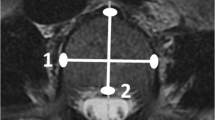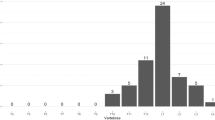Abstract.
The prevalence and risk factors for vertebral deformity were studied in 396 community-dwelling Chinese men aged 70–79 years. Anterior to posterior (Ha/Hp), middle to posterior (Hm/Hp) and posterior to posterior (Hp/Hp − 1 or Hp/Hp + 1) ratios from T5 to L5 were derived from lateral spine X-ray films, using standardized digitization methods. Using values of 3 standard deviations (SD) or more below the mean and 4 SD or more below the mean as the cutoff, 16% and 7% of these men, respectively, were deemed to have one or more deformed vertebra. Heavy cigarette smoking, heavy alcohol consumption, and working as a heavy manual worker were risk factors for vertebral deformity. Men with severe vertebral deformity (VHR < mean − 4 SD below mean) had much lower body weight, fat mass, and bone mineral density (BMD) than controls. The odds ratios for severe vertebral deformity was 9.9 (95% CI 2.1–45.7) in the lowest quartile of femoral neck BMD.
Similar content being viewed by others
Author information
Authors and Affiliations
Additional information
Received: 7 July 1998 / Accepted: 26 July 1999
Rights and permissions
About this article
Cite this article
Lau, E., Chan, Y., Chan, M. et al. Vertebral Deformity in Chinese Men: Prevalence, Risk Factors, Bone Mineral Density, and Body Composition Measurements. Calcif Tissue Int 66, 47–52 (2000). https://doi.org/10.1007/s002230050009
Issue Date:
DOI: https://doi.org/10.1007/s002230050009




